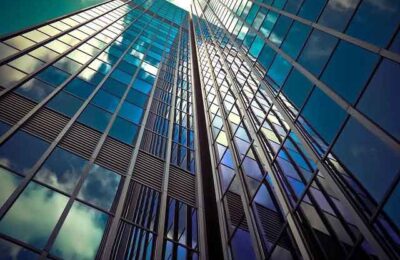The buildings and construction sector account for nearly 39% of total carbon emissions in the world. The sector is actively seeking new construction technologies to reduce the impact of carbon from buildings and construction.
Concrete and steel have a bigger ecological footprint and the need for alternative building material for construction has grown.
Materials are integral to any buildings. Incorporating sustainable materials are significant to reduce the building’s negative environmental impacts.
Timber is one of the most renewable construction materials which offers a greener built environment.
What is Cross Laminated Timber?
Cross-laminated timber (CLT), a popular construction technology mainly used in Europe today, was first originated in the mid of 1990s in Austria.
CLT is an extremely flexible structural timber panel used to shape sustainable walls, roofs and floors within several structures. The construction technology is a design of massive volume wood panel construction.
The technology provides exceptional structural integrity, durability and performance.
1) Captures carbon
Since timber is sustainably sourced, the material has a low environmental impact on buildings.
In contrast to other construction technologies, in CLT, timber stores carbon dioxide throughout the building’s life cycle. Moreover, timber has great end-of-life treatment. During the final stages of its life, the carbon is released mostly through natural decomposition (by restoring other nutrients in the soil) and the production of heat/energy (by burning it as a fuel).
This makes the technology more sustainable and environmentally friendly in the construction industry. This low-carbon technology can transform the industry’s use of unsustainable practices.
CLT has 60% less embodied carbon than conventional technologies.
2) Offers a light-weight structure
Traditional heavyweight construction materials often contribute to larger embodied energy, especially from site preparations and transportation of materials. The need to reduce embodied energy in construction is significant for tackling climate change impacts from buildings and construction.
Innovations and alternate building materials are providing the market with more options that improve the affordability and sustainability of construction.
CLT panels are lighter than concrete and steel, and also strong to support heavy loads. This makes timber a low-carbon alternative to conventional concrete and steel.
For example, the largest timber-frame office building in Paris offers an enormous weight reduction of 30% in contrast to traditional steel or concrete structural frame.
Moreover, up to 40 to 50% weight reduction is achievable in timber buildings compared to concrete and steel structures.
This results in lower embodied energy from the entire building’s life cycle.
3) Uses Offsite construction method
CLT can offer dry, factory-made off-site construction, with great potential for airtightness and a strong wall and floor structure applicable for nearly all finishes internally and externally. The manufactured panels are sent to the construction site for assembly through the crane.
The offsite technology reduces the time for construction in half and faster to erect at the site. It is cost-effective and easy to produce in factories than on-site due to reduced impact from changing weather conditions that makes the resources safe and efficient.
The technology is resource-efficient and generates less waste. Building Information Modelling (BIM) is used in offsite construction, the software aids to pre-plan budgets and sets factory conditions required to manufacture panels. This contributes to less wastage of materials with low defects. Moreover, factories use pressure-treated CLT, making it resistant to termites and rots. Since CLT is engineered in factories, the panels are manufactured to be stronger with a better strength-weight ratio.
Less transport of materials due to off-site production reduces transport-related emissions.
4) Efficient demolition and waste recycling
Besides being simple to construct, the technology’s lightweight characteristics make CLT easier to dismantle and the material is faster to deconstruct than other building materials.
The offsite construction produces less waste on-site. The leftovers and waste are reused and recycled for various purposes, making it carbon neutral.
With the construction of new buildings, choosing the right material that reduces carbon emissions is integral for the whole life cycle of a building and health of the planet. Cross-laminated timber technology has the potential to meet climate targets and create innovative building designs.

